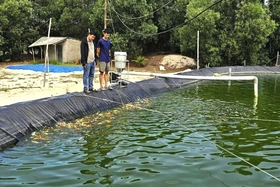RsOdSuG7iFUl4buONTVE4buKMuG7s+G7sjYl4buk4buKR8OtPyZY4bukNOG7pCZV4buk4buIPybhu4jigJzhu6Phu44/4buIaeG7jj8tw6zhu6QmNeG7juG6t+G7jibhu4jDrTQ/NTVUPzTDmuG7pDThu4jhu4lVPyY/KuG7slXhu4haPybhu6Thurzhu4jhu480Pyrhu4jhu5HDmuG7pOG7juG7iDY/4buIdzThu45VNuG7slXhu6TigJ3hu4g/MuG7pCY1Ri/DnUpHRjLhu4hVJeG7jjU1ROG7ijLDtOG7pOG7jsOa4buKR+G7s8Od4buk4buINjThu44mNSbhu4424buyPybhu44l4buI4bukVT8mPyrhu7JV4buIej8m4buk4buI4bqzw53hu7JVw53hu4hVPyYm4bukVTY14buIeDfhu44mWeG7iOG7szThu7Lhu4h3ND/hurfhu7ImVeG7pOG7iOG7jibDmuG7iMO94buO4bq34buOJibhu44kw53hu6Q24buIdzQ/4bq34buyJlXhu6Thur7hu4jhu6Phu44/NeG7iOG7sjXhu4jhu7Im4buIJeG7sibhu6Thu4jhurPhu7I2w53hu4g2w53hu6Thu4h4N+G7jiZZ4buI4buzNOG7suG7iHc0P+G6t+G7siZV4buk4oCZNeG7iDU/VeG7sj8t4bukVT8mPyrhu7JV4buIw5rhu6Thurfhu6QlPzIq4bukJjbhu4jhu44mw5rhu4h3PyXhu7I2VDc0P+KAmTXhu4h54bukNT8lNzbhu7I/JuG7iOG7oT/hu4BLTy3hu6F4L+G7s+G6suG7iMOa4buONuG7pMOa4buI4buhP+G6t+G7pCpU4bukNOG7iEzhur7hu4hLxKhLS+G7iD8m4buINT9V4buyPy3hu6RVPyY/KuG7slXhu4jDmuG7pOG6t+G7pCU/Mirhu6QmNuG7iOG7jibDmuG7iMOa4bukWOG7pCY14buk4buI4buOJsOa4buINeG7pFU3NOG7sjbDouG7iOG7sibhu4g2w53hu6Thu4gmPzQ2w53hu6Q0JuG7iOG7jibDmuG7iFXhu6QmNjThu44l4buIVT/hu441NuG7jiXhu4jhu4404buk4buONeG7iFTDouG7iEvEqEzEqOG7iOG7jibDmuG7iOG6t+G7sjXhu7I/JuG7iDY/4buIS8SoTU7hu4BGLzJHRjLhu4hVJeG7jjU1ROG7ijJpP8Oaw6Lhu4pHcCbhu4g2w53hu6Thu4g/VVXhu4414buyPybhu4g/WOG7iDbDneG7pOG7iFU/Jljhu6Q04bukJlXhu6Thur7hu4g2w53hu6Thu4h4N+G7jiZZ4buI4buzNOG7suG7iOG7oeG7pOG6szUy4buOMuG7pDThu4g24buOJSThu6TDmuG7iOG6s+G7sjbDneG7iMO04buO4buIw73DouG7iMOsPyZZ4bq+4buIw6zhu6QyNzbDouG7iHfhu6Q0KuG7jibhu6QmNuG7iMOtw53hu47hu7I0KuG7jibhu4g/WOG7iDbDneG7pOG7iHg34buOJlnhu4jhu7M04buy4buId+G7pD8yJeG7pOKAmTXhu4jDrT8qKuG7sjY24buk4buk4bq+4buIPybhu4jDnT/hurPhu4g2P+G7iDY3NCbhu4g2w53hu6Thu4jhu6RVPyY/KuG7slXhu4h6Pybhu6TigJk14buI4buyw5rhu6Thu47hu4jhu7ImNj/hu4g04buk4buOJeG7sjbDouG7gEYvMkdGMuG7iFUl4buONTVE4buKMmk/w5rDouG7ikdG4buyKlnhu4hVJeG7jjU1ROG7iuG7ssOt4bukJjbhu6Q04buK4buINTbDoiXhu6RE4buK4bqz4buyw5o2w53hurzhu4hKTsSoxKgy4bq1w4rhu4jDneG7pOG7slnDnTbhurzhu4hKxKjEqEoy4bq1w4rhu4rhu4g1NFVE4buKLy9V4buAVOG7jj8zN+G7jiZZNjThu7Lhu4DhurcmL8Oa4bukNSQ2PzIvJuG7pOG6szUvS01KSi9KTE7Dmk5LTMSow5PEqMSoNk5MT00lTy3DneG7ji01w6Itw5o/Jlnhu4DhurPhu6RUMuG7iuG7iOG7jiU2ROG7isOtPyZY4bukNOG7pCZV4buk4buIPybhu4jigJzhu6Phu44/4buIaeG7jj8tw6zhu6QmNeG7juG6t+G7jibhu4jDrTQ/NTVUPzTDmuG7pDThu4jhu4lVPyY/KuG7slXhu4haPybhu6Thurzhu4jhu480Pyrhu4jhu5HDmuG7pOG7juG7iDY/4buIdzThu45VNuG7slXhu6TigJ3hu4g/MuG7pCY14buK4buI4bqz4buyw5o2w51E4buKSk7EqMSo4buK4buIw53hu6Thu7JZw502ROG7ikrEqMSoSuG7iuG7iC9HRi8yR0Yy4buIVSXhu441NUThu4oyw63hu44yNuG7sj8m4buKR0bhu6QqR8O04buO4buIw73DouG7iMOsPyZZ4bq+4buIw6zhu6QyNzbDouG7iHfhu6Q0KuG7jibhu6QmNuG7iMOtw53hu47hu7I0KuG7jibhu4g/WOG7iDbDneG7pOG7iHg34buOJlnhu4jhu7M04buy4buId+G7pD8yJeG7pOKAmTXhu4jDrT8qKuG7sjY24buk4bukRi/hu6QqR0YvMkdGMuG7iFUl4buONTVE4buKMmk/w5rDouG7ikdGNTY0PyZZR0bhu6QqR+G6ssOdw6Lhu4jDmuG7ssOa4buIeDfhu44mWeG7iOG7szThu7Lhu4hVw50/PzXhu6Thu4g2P+G7iOG7sioyJeG7pCrhu6QmNuG7iDbDneG7pOG7iDLhu7IlPzbhu4gqP8Oa4bukJeG6ukYv4bukKkdGLzU2ND8mWUdGLzJHRjLhu4hVJeG7jjU1ROG7ijJpP8Oaw6Lhu4pH4buRJuG7iErhu4zhu4zDk+G6vuG7iDbDneG7pOG7iHc/JeG7sjZUNzQ/NeG7iD9Y4buI4bq24buy4bukNibhu44q4buI4buOJsOa4buI4buj4buOPzXhu4g04buk4buOVcOd4bukw5rhu4jhu47hu4hVPyY14bukJjU3NeG7iD8m4buIw5rhu6Thurfhu6QlPzLhu7ImWeG7iOG7juG7iDY04buOJjVUPzTDmuG7pDThu4jhu6RVPyY/KuG7slXhu4jhu44mw5rhu4hVPyoq4bukNFXhu7Lhu44l4buIej8m4buk4bq+4buI4bqzw53hu7JVw53hu4jhurPhu4414buINsOd4bukJuG7iDU24buyMjcl4buONuG7pMOa4buI4buyJuG7iHnhu6Q1PyU3NuG7sj8m4buI4buhP+G7gEtPLeG7oXgv4buz4bqy4buIw5rhu4424bukw5rhu4jhu6E/4bq34bukKlThu6Q04buITOG6vuG7iEvEqEtL4bq+4buI4buyJuG7iDbDneG7pOG7iCbhu4424buyPybhu44l4buIKuG7jjU24bukNOG7iDIl4buOJuG7gOG7iOG7kTbhu4jDneG7slnDnSXhu7JZw5024bukw5rhu4hUPz81NuG7siZZ4buI4bukVT8mPyrhu7JV4buIVT8/MuG7pDThu4424buyPybhu4g2w500PzdZw53hu4hUPzTDmuG7pDThu4hZ4buONuG7pDXhu4jhu441NT9V4buy4buONuG7pMOa4buI4bqz4buyNsOd4buINsOd4buk4buI4buJ4buONTYt4bqy4bukNTbhu4jhu4lVPyY/KuG7slXhu4jDrT80NOG7ssOaPzThu4jhu4Lhu4nhurLhu4nDreG7hOG7gOG7iOG7s8Od4bukNOG7pFg/NOG7pOG6vuG7iOG7juG7iDLhu7IlPzbhu4gqP8Oa4bukJeG7iD8m4buINsOd4buk4buIVD80w5rhu6Q04buI4bukVT8mPyrhu7JV4buIej8m4buk4buIPybhu4g2w53hu6Thu4jhu4nhurLhu4nDreG7iDXDnT83JcOa4buIVOG7pOG7iFXhu440NOG7suG7pMOa4buIPzc24buARi8yR0Yy4buIVSXhu441NUThu4oyaT/DmsOi4buKR3g34buOJlnhu4jhu7M04buy4buIw50/JcOaNeG7iFjhu47hurc/NOG7jlQl4buk4buIVT8mw5rhu7I24buyPyY14buIWD804buIMuG7siU/NuG7siZZ4buINsOd4buk4buIKj/DmuG7pCXhu4jhu4414buI4buyNjXhu4glP1Xhu4424buyPybhu4jhu7I14buI4buONuG7iDbDneG7pOG7iFjhu7I0NTbhu4gyPyXhu6Thu4g/JuG7iDbDneG7pOG7iOG7ieG6suG7icOt4buI4oCT4buINsOd4buk4buISk1OxKgtJCrhu4g0P+G7jsOa4buINTLhu44mJuG7siZZ4buISkzhu4gyND/hurfhu7ImVeG7pDXhu4jhu44mw5rhu4hV4buyNuG7suG7pDXhu4g/WOG7iFg/NzThu4hVPzcmNjThu7Lhu6Q14bq84buI4bufw6Lhu44mKuG7jjThur7hu4jhu7PDneG7juG7siXhu44mw5rhur7hu4jhu6Phu44/NeG6vuG7iOG7jibDmuG7iOG6tuG7suG7pDYm4buOKuG7gOG7iOG6suG7sjbDneG7iDbDneG7pOG7iOG7o+G7jj/hu4hp4buOP+G7iOG7kSY24bukNCbhu4424buyPybhu44l4buIaT80w5rhu6Q04buIw7Xhu4424buk4bq+4buIeDfhu44mWeG7iOG7szThu7Lhu4hU4bukVT8q4bukNeG7iD8m4buk4buIP1jhu4g2w53hu6Thu4jDnTdUNeG7iFg/NOG7iMOa4bukVeG7pCY2NOG7jiXhu7J64bukw5rhu4hVPz8y4bukNOG7jjbhu7I/JuG7iOG7jio/Jlnhu4glP1Xhu44l4buyNuG7suG7pDXhu4jhu7Im4buINsOd4buk4buI4buf4bukJD8mWeG7iMO9N1Q04bukWeG7sj8m4bq+4buIPybhu6Thu4g/WOG7iDbDneG7pOG7iFnhu4424buk4bqz4buOw6I14buIJeG7pOG7jsOa4buyJlnhu4g2P+G7iDbDneG7pOG7iOG7ieG7jjU24buIw73hu6Thu47hu4g2w500PzdZw53hu4g2w53hu6Thu4jhu5/DouG7iOG7s8OdN8Oi4buIw5rhu6Thu6Qy4bqz4buONuG7pDThu4gyPzQ24buARi8yR0Yy4buIVSXhu441NUThu4oyaT/DmsOi4buKR3g34buOJlnhu4jhu7M04buy4buIVD/hu441NjXhu4jhu47hu4jhurPhu6QlJS1VPz80w5rhu7Im4buONuG7pMOa4buINjThu44mNTI/NDbhu4424buyPybhu4gm4bukNuG6sz80JOG7iFU/KjI04buyNeG7siZZ4buIw5rhu6Thu6Qy4bqz4buONuG7pDThu4g14buk4buOMj80NjXhur7hu4jhu6E/NDbDnS3DvT83NsOd4buINOG7juG7siXhurPhu47DojXhur7hu4g0P+G7jsOaNeG6vuG7iOG6s+G7jjbhu6Q04bqz4buOw6I14bq+4buI4buOJsOa4buI4buO4buyNDI/NDY14buINybDmuG7pDThu4hVPyY1NjQ3VTbhu7I/JuG6vuG7iDI0Pyo/NuG7siZZ4buINsOd4buk4buIWCU/4bqz4buIP1jhu4gyND/DmjdVNjXhu4jhu44mw5rhu4gy4bukPzIl4buk4buI4bqzw53hu7Il4buk4buI4bukNTbhu45UJeG7sjXDneG7siZZ4buINsOd4buk4buIWDThu44q4buk4bqzPzQk4buIWD804buINsOd4buk4buIWTQ/4bqzNsOd4buIP1jhu4g2NOG7jsOa4buk4bq+4buIVDc14buyJuG7pDU14bq+4buI4buyJuG6t+G7pDU2KuG7pCY24bq+4buINeG7pDThurfhu7JV4bukNeG6vuG7iOG7jibDmuG7iDY/NzThu7I1KuG7iOG7jjbhu4g2w53hu6Thu4glP1Xhu44l4bq+4buIJuG7jjbhu7I/JuG7jiXhur7hu4jhu44mw5rhu4jhu7ImNuG7pDQm4buONuG7sj8m4buOJeG7iCXhu6Thurfhu6QlNeG7gEYvMkdGMuG7iFUl4buONTVE4buKMmk/w5rDouG7ikdpPzbDneG7iDbDneG7pOG7iOG7o+G7jj/hu4hp4buOP+G7iMO9MuG7pFXhu7Lhu44l4buI4buJVT8mPyrhu7JV4buIWj8m4buk4buI4buyJuG7iOG6tuG7suG7pDYm4buOKuG7iOG7jibDmuG7iDbDneG7pOG7iMOs4bukJjXhu47hurfhu44m4buIaT80w5rhu6Q04buI4buzNOG7jsOa4buk4buIWj8m4buk4buI4buyJuG7iOG7o+G7jj814buI4bqz4bukNOG7pOG7iOG7pDU24buOVCXhu7I1w53hu6TDmuG7iFThu4414bukw5rhu4g/JuG7iDbDneG7pOG7iDThu6RZ4buyPybigJk14buI4buOw5rhurfhu44mNuG7jlnhu6Q14bq+4buINsOd4buk4buINuG6sz/hu4gm4buONuG7sj8mNeKAmeG7iDUy4bukVeG7suG7jiXhu4hYNOG7suG7pCbDmjXDneG7sjLhur7hu4g2w53hu6Thu4gyPyXhu7JV4buy4bukNeG7iD9Y4buINsOd4buk4buyNOG7iDThu6Q1MuG7pFU24buy4bq34buk4buIWT/hurfhu6Q0Jirhu6QmNuG7iCrhu7Im4buyNTY04buy4bukNeG6vuG7iOG7jibDmuG7iDbDneG7pOG7sjThu4g04bukNT8l4bq34buk4buINj/hu4g14bukJeG7pFU24buI4buOJsOa4buIw5rhu6Thurfhu6QlPzLhu4jhu47hu4hVPyoqPybhu4jhu4404buk4buO4buINsOd4buONuG7iOG6sz83JcOa4buIMuG7pDQq4buyNuG7iDbDneG7pOG7iDLhu7IlPzbhu4jhu44yMiXhu7JV4buONuG7sj8m4buIP1jhu4gy4buONDbhu7JVNyXhu4404buIMj8l4buyVeG7suG7pDXhu4BGLzJHRjLhu4hVJeG7jjU1ROG7ijJpP8Oaw6Lhu4pH4buPPyUlP+G6s+G7siZZ4buIP+G6t+G7pDThu4hLTuG7iMOi4buk4buONDXhu4g/WOG7iFk0P+G6szbDneG6vuG7iDbDneG7pOG7iDbhurM/4buI4bukVT8mPyrhu7JV4buIej8m4bukNeG7iMOd4buO4bq34buk4buIMiXhu47DouG7pMOa4buI4buO4buINeG7slkm4buyWOG7slXhu44mNuG7iDQ/JeG7pOG7iOG7sibhu4g2w53hu6Thu4jDmuG7pOG6t+G7pCU/Mirhu6QmNuG7iD9Y4buINsOd4buk4buIeDfhu44mWeG7iOG7szThu7Lhu4jhu44mw5rhu4jDveG7juG6t+G7jiYm4buOJMOd4bukNuG7iDI0P+G6t+G7siZV4bukNeG7iFTDouG7iOG7jiU24bukNOG7siZZ4buINsOd4buk4buIJeG7jibDmjVV4buOMuG7pOG7iD8m4buIVD82w53hu4g14buyw5rhu6Q14buIP1jhu4g2w53hu6Thu4hUPzTDmuG7pDThu4Dhu4hp4bukw6I/JsOa4buINsOd4buk4buI4buOVVU/KjIl4buyNcOd4bukw5rhu4g/NzZVPyrhu6Q14bq+4buINT8q4buk4buIw5o04buO4bqzVOG7jlUkNeG7iOG7jibDmuG7iFThu6Qm4bukWOG7sjY14buINTbhu7IlJeG7iCbhu6Thu6TDmuG7iDY/4buIVOG7pOG7iFg3JSXDouG7iDThu6Thu44l4buyeuG7pMOa4buINj/hu4gyND/hurfhu7LDmuG7pOG7iDbDneG7pOG7iOG7o+G7jj/hu4hp4buOP+G7iC3hu4jDrOG7pCY14buO4bq34buOJuG7iOG7jjThu6Thu47hu4jhurPhu7I2w53hu4g2w53hu6Thu4jhu7ImVeG7pCY24buy4bq34buk4buINj/hu4jDmuG7pOG6t+G7pCU/MuG7iOG7sibhu4gl4buyJuG7pOG7iOG6s+G7sjbDneG7iDbDneG7pOG7iDY04bukJsOa4buIP1jhu4hZJT9U4buOJeG7iOG7pFU/Jj8q4buyVeG7iOG7siY24bukWTThu4424buyPybhu4jhu44mw5rhu4gyPyXhu7JVw6Lhu4gq4bukVcOd4buOJuG7sjUqNeG7gEYvMkdGMuG7iFUl4buONTVE4buKMmk/w5rDouG7ikfhu7M/4buIKuG7juG6teG7sirhu7J64buk4buINsOd4buk4buIMj824bukJjbhu7Lhu44l4buIP1jhu4g2w53hu6Thu4jDrOG7pCY14buO4bq34buOJuG7iGk/NMOa4bukNOG7iMOtPyoq4bukNFXhu7Lhu44l4buIYjThu6Thu47hu4jhu44mw5rhu4g2w53hu6Thu4jhu6Phu44/4buIaeG7jj/hu4jDvTLhu6RV4buy4buOJeG7iOG7iVU/Jj8q4buyVeG7iFo/JuG7pOG7iOG7sibhu4g1NzIyPzQ24buyJlnhu4glP1Xhu44l4buI4buOJsOa4buINOG7pFnhu7I/JuG7jiXhu4jhu6RVPyY/KuG7slXhu4jDmuG7pOG6t+G7pCU/Mirhu6QmNuG6vuG7iHg34buOJlnhu4jhu7M04buy4buINeG7siZV4buk4buIS8SoSk7hu4jDneG7jjXhu4gyND/hu45VNuG7suG6t+G7pCXDouG7iDU3WVnhu6Q1NuG7pMOa4buINj/hu4g2w53hu6Thu4hZP+G6t+G7pDQmKuG7pCY24buI4buO4buIVT83NDXhu6Thu4g/WOG7iOG7jlU24buyPybhu4hYPzThu4g1NjfDmsOi4buyJlnhu4jhu44mw5rhu4jDmuG7pOG6t+G7pCU/MuG7siZZ4buINsOd4buk4buI4buj4buOP+G7iGnhu44/LeG7iMOs4bukJjXhu47hurfhu44m4buIw600PzU1VD80w5rhu6Q04buI4buJVT8mPyrhu7JV4buIWj8m4buk4buA4buI4buzw53hu7I14buI4buyNeG7iDLhu440NuG7iD9Y4buINsOd4buk4buIWDThu7Lhu6Qmw5o1w53hu7Iy4buI4buOJsOa4buIVT8/MuG7pDThu4424buyPybhu4hU4bukNuG6s+G7pOG7pCbhu4jhurbhu7Lhu6Q2JuG7jirhu4jhu44mw5rhu4jhu6Phu44/NeG7gEYvMkdGMuG7iFUl4buONTVE4buKMmk/w5rDouG7ikfhu5Em4buINsOd4buk4buId+G7jjQ2w6LigJk14buIw63hu6QmNjThu44l4buIw60/Kirhu7I2NuG7pOG7pOG6vuG7iOG7sibhu4jhu7I2NeG7iMOaP1U3KuG7pCY24buITE4t4buzaS/hurZ34buz4bqy4buIw5rhu4424bukw5rhu4g/JuG7iGIyNOG7siXhu4hLSuG6vuG7iEvEqErDk+G7iOG6s8Od4buyVcOd4buI4bqz4buONeG7iDThu6Ql4buk4buONeG7pMOa4buI4buOWDbhu6Q04buINsOd4buk4buI4bqzPzQk4buyJlnhu4jhurfhu7I14buyNuG7iDLhu47hu7LDmuG7iDY/4buIeDfhu44mWeG7iOG7szThu7Lhu4hUw6Lhu4jDteG7pCbhu6Q04buOJeG7iMO94bukVTThu6Q24buONMOi4buIP1jhu4g2w53hu6Thu4jDrT8qKjcm4buyNTbhu4h34buONDbDouG7iD9Y4buI4bq24buy4bukNibhu44q4buI4buhWTfDouG7pCbhu4h3w5034buI4buzND8mWeG6vuG7iHg34buOJlnhu4jhu7M04buy4buI4bqz4buONeG7iFXDnT814bukJuG7iDY/4buIVT8mw5o3VTbhu4jhu47hu4gy4buyJT824buIMjQ/PeG7pFU24buIPybhu4jDmuG7pOG6t+G7pCU/MuG7siZZ4buINsOd4buk4buI4buj4buOP+G7iGnhu44/4buIw70y4bukVeG7suG7jiXhu4jhu4lVPyY/KuG7slXhu4haPybhu6Thu4jhu44mw5rhu4g2w53hu6Thu4jDrOG7pCY14buO4bq34buOJuG7iGk/NMOa4bukNOG7iMOtPyoq4bukNFXhu7Lhu44l4buIYjThu6Thu47hu4g2P+G7iDU3VCrhu7I24buINj/hu4g2w53hu6Thu4h3PyXhu7I2VDc0P+G7iOG7jibDmuG7iFk/4bq34bukNCYq4bukJjbhu4g/WOG7iOG6tuG7suG7pDYm4buOKuG7iOG7jibDmuG7iOG7o+G7jj814buARi8yR0Yy4buIVSXhu441NUThu4oyaT/DmsOi4buKR2nhu4414bukw5rhu4g/JuG7iDbDneG7sjXhur7hu4g2w53hu6Thu4gyND/hurfhu7ImVeG7pOG7iD9Y4buIeDfhu44mWeG7iOG7szThu7Lhu4g14bukNuG7iDcy4buI4bqyPzQk4buyJlnhu4jDtTQ/NzLhu4hPS0/hu4g2P+G7iFU/KjLhu7Il4buk4buI4buO4buIw5o04buOWDbhu4hU4buyJeG7jjbhu6Q04buOJeG7iOG7jlk04buk4bukKuG7pCY24buI4buOJsOa4buI4buO4buIw5o04buOWDbhu4gyND894bukVTbhu4g2P+G7iFU/JjU2NDdVNuG7iOG7juG7iFU0PzU1VD80w5rhu6Q04buI4bukVT8mPyrhu7JV4buIej8m4buk4buA4buI4buzw53hu6Thu4gyND/hurfhu7ImVeG7pOG7iMOd4buONeG7iFU/Jjbhu7ImN+G7pMOa4buINj/hu4hZ4buONsOd4bukNOG7iOG7siYyNzbhu4hYND8q4buIVDc14buyJuG7pDU14bukNeG7iOG7jibDmuG7iOG7pOG6tTLhu6Q0NjXhur7hu4jhu44mw5rhu4g2w53hu6Thu4hVPyZY4bukNOG7pCZV4buk4buIPybhu4jhu5/hu440VcOd4buISk7hur7hu4hLxKhLTeG7iOG6s+G7siUl4buIw53hu47hurfhu6Thu4jhu47hu4hYPzcmw5rhu4424buyPybhu4g3Mj8m4buI4bqzw53hu7JVw53hu4g2P+G7iDThu6QyPzQ24buI4buOJsOa4buIWOG7sibhu7I1w53hu4g2w53hu6Thu4jDmjThu45YNuG7iDbDneG7jjbhu4jhurPhu6Thu4jhurPhu7IlJeG7iDI04bukNeG7pCY24buINj/hu4g2w53hu6Thu4hZP+G6t+G7pDQmKuG7pCY2NeG7iD9Y4buINsOd4buk4buINuG6sz/hu4gm4buONuG7sj8mNeG7gEYvMkdGMuG7iFUl4buONTVE4buKMmk/w5rDouG7ikdG4buyKlnhu4hVJeG7jjU1ROG7iuG7ssOt4bukJjbhu6Q04buK4buINTbDoiXhu6RE4buK4bqz4buyw5o2w53hurzhu4hKw5PDk0sy4bq1w4rhu4jDneG7pOG7slnDnTbhurzhu4jhu4zhu4zDkzLhurXDiuG7iuG7iDU0VUThu4ovL1Xhu4BU4buOPzM34buOJlk2NOG7suG7gOG6tyYvw5rhu6Q1JDY/Mi8m4buk4bqzNS9LTUpKL0pMTsOaTktMxKhMS002S+G7jErDkyVKLSXhu44/LVThu44/LVQ/NMOa4bukNC1Z4buONuG7pOG7gOG6s+G7pFQy4buK4buI4buOJTZE4buKw60/Jljhu6Q04bukJlXhu6Thu4g/JuG7iOKAnOG7o+G7jj/hu4hp4buOPy3DrOG7pCY14buO4bq34buOJuG7iMOtND81NVQ/NMOa4bukNOG7iOG7iVU/Jj8q4buyVeG7iFo/JuG7pOG6vOG7iOG7jzQ/KuG7iOG7kcOa4buk4buO4buINj/hu4h3NOG7jlU24buyVeG7pOKAneG7iD8y4bukJjXhu4rhu4jhurPhu7LDmjbDnUThu4pKw5PDk0vhu4rhu4jDneG7pOG7slnDnTZE4buK4buM4buMw5Phu4rhu4gvR0YvMkdGMuG7iFUl4buONTVE4buKMsOt4buOMjbhu7I/JuG7ikdG4bukKkfhu6Phu44/4buIaeG7jj/hu4jhu5EmNuG7pDQm4buONuG7sj8m4buOJeG7iGk/NMOa4bukNOG7iMO14buONuG7pOG7iMOd4buONeG7iOG7juG7iCbhu6ThurPhu4glPz8k4buA4buId8OdPzY/4bq84buI4buz4buA4buzRi/hu6QqR0YvMkdGMuG7iFUl4buONTVE4buKMmk/w5rDouG7ikdGNTY0PyZZR0bhu6QqR8O0P+G6s+G7iMOaP+G7pDXhu4g2w53hu6Thu4hVND81NVQ/NMOa4bukNOG7iOG7pFU/Jj8q4buyVeG7iHo/JuG7pOG7iOG6sz80JOG6uuG7iEYv4bukKkdGLzU2ND8mWUdGLzJHRjLhu4hVJeG7jjU1ROG7ijJpP8Oaw6Lhu4pH4bqy4buyNsOd4buIVT8qKj8m4buIKuG7pFXDneG7jibhu7I1KjXhur7hu4gyPyXhu7JV4buy4bukNeG6vuG7iOG7jibDmuG7iD8y4bukNOG7jjbhu7I/JuG7jiXhu4gq4buOJuG7jlnhu6Qq4bukJjbhur7hu4g2w53hu6Thu4gyND8yPzXhu6TDmuG7iFU0PzU1VD80w5rhu6Q04buI4bukVT8mPyrhu7JV4buIej8m4buk4buIMjQ/PeG7pFU24buI4buyNeG7iOG7pOG6tTLhu6RVNuG7pMOa4buINj/hu4hYNyZVNuG7sj8m4buIVMOi4buINsOd4buk4buI4oCc4buz4bqzP+G7iFU/NyY2NOG7suG7pDXhur7hu4g/JuG7pOG7iOG7pFU/Jj8q4buyVeG7iHo/JuG7pOKAneG7iCo/w5rhu6Ql4buA4buI4buRNuG7iOG6s+G7siUl4buIw53hu47hurfhu6Thu4g1MuG7pFXhu7Lhu44l4buIMjThu6RY4bukNOG7pCY24buy4buOJeG7iDI/JeG7slXhu7Lhu6Q14buIVOG7jjXhu6TDmuG7iD8m4buI4bukMzfhu44l4buyNsOi4buI4buOJsOa4buIKjc2N+G7jiXhu4hU4bukJuG7pFjhu7I24bq+4buINOG7pDUy4bukVTbhu7ImWeG7iOG7pOG7jlXDneG7iD82w53hu6Q04oCZNeG7iOG7sibDmuG7pDLhu6Qmw5rhu6QmVeG7pOG6vuG7iDU/4bq34bukNOG7pOG7slkmNsOi4bq+4buI4buOJsOa4buINuG7pDQ04buyNj804buy4buOJeG7iOG7siY24bukWTThu7I2w6Lhu4BGLzJHRjLhu4hVJeG7jjU1ROG7ijJpP8Oaw6Lhu4pH4buzw53hu6Thu4jhu6Phu44/4buIaeG7jj8tw6zhu6QmNeG7juG6t+G7jibhu4jDrTQ/NTVUPzTDmuG7pDThu4jhu4lVPyY/KuG7slXhu4haPybhu6Thu4jhurPhu7IlJeG7iFThu6Thu4hVPypU4buyJuG7pMOa4buI4buyJjY/4buI4buO4buINeG7siZZJeG7pOG7iDThu6RZ4buyPybhu44l4buIMiXhu44mJuG7siZZ4bq+4buIPzLhu6Q04buONuG7sj8m4bq+4buI4buOJsOa4buIVT8mNTY0N1U24buyPybhu4gyND894bukVTbhu4hU4buONeG7pMOa4buIPybhu4jhu47DmsOd4bukNOG7pCZV4buk4buINj/hu4jhu7ImNuG7pDQm4buONuG7sj8m4buOJeG7iCY/NCo14buI4buOJsOa4buIVD82w53hu4g14buyw5rhu6Q14oCZ4buIJeG7pFnhu44l4buINOG7pDM34buyNOG7pCrhu6QmNjXhu4Dhu4jhu5E24buI4bukJuG7jlQl4bukNeG7iFU0PzU1VD80w5rhu6Q04buINjThu44mNTI/NDbhu4424buyPybhu4jhu44mw5rhu4glP1nhu7I1NuG7slU14buIJeG7siYk4buOWeG7pDXhur7hu4gyND/hurfhu7LDmuG7pDXhu4g2w53hu6Thu4hZ4bukJuG7pDThu44l4buI4buyJlg04buONTY0N1U2NzThu6Thu4jhu7Im4buINsOd4buk4buIVeG7pCY2NOG7jiXhu4g04bukWeG7sj8m4bq+4buI4buOJsOa4buIVT8mJuG7pFU2NeG7iOG7siZYNOG7jjU2NDdVNjc04buk4buI4buyJjXhu7LDmuG7pOG7iOG7jibDmuG7iD83NjXhu7LDmuG7pOG7iDbDneG7pOG7iDThu6RZ4buyPybhu4BGLzJHRjLhu4hVJeG7jjU1ROG7ijJpP8Oaw6Lhu4pH4buRNuG7iOG6s+G7siUl4buI4buk4bq14bukVTc24buk4buI4buO4buI4oCcNsOdNOG7pOG7pOG7iOG7sibhu4g/JuG7pOKAneG7iCrhu6RVw53hu44m4buyNSrhu4jhu4I2w5004buk4buk4buIVT/hu7ImNeG6vOG7iDXhu44q4buk4buIMj8l4buyVeG7suG7pDXhur7hu4g0NyXhu6Q14bq+4buI4buOJsOa4buINTbhu44mw5rhu440w5o1w4rhu4g/JuG7pOG7iFU/Kio/JuG7iOG7jjThu6Thu47hu4Thu4jhurPDneG7siXhu6Thu4jhu44yMiXDouG7siZZ4buINsOd4buk4buIKj81NuG7iFjhu47hurc/NOG7pMOa4buIKuG7pFXDneG7jibhu7I1KjXhu4jhu44mw5rhu4gyPyXhu7JV4buy4bukNeG7iDbDneG7jjbhu4g2w53hu6Thu4hZP+G6t+G7pDQmKuG7pCY2NeG7iD9Y4buI4buj4buOPzXhu4jhu44mw5rhu4jhurbhu7Lhu6Q2JuG7jirhu4jhu4404buk4buI4buyKjIl4bukKuG7pCY24buyJlnhu4jhu7Im4buINsOd4buk4buyNOG7iDThu6Q1MuG7pFU24buy4bq34buk4buI4bukVT8mPyrhu7JV4buI4buOJsOa4buINjThu47DmuG7pOG7iHo/JuG7pDXhu4BGLzJHRjLhu4hVJeG7jjU1ROG7ijJpP8Oaw6Lhu4pH4buzw53hu6Thu4g24bqzP+G7iFk/4bq34bukNCYq4bukJjY14buI4bqz4buyJSXhu4g04bukKj/hurfhu6Thu4g/VDU24buOVSXhu6Q14buI4buOJsOa4buINTY04buk4buOKiXhu7Im4buk4buIJeG7jlQ/NOG6vuG7iOG7sibhurfhu6Q1Nirhu6QmNuG7iDI0P1Xhu6TDmjc04bukNeG6vuG7iOG7jibDmuG7iCU/4buOJuG7iDThu6QzN+G7sjThu6Qq4bukJjY14buIWD804buI4buyJuG6t+G7pDU2KuG7pCY24buIMjQ/PeG7pFU2NeG7iOG6s+G7sjbDneG7iCbhu6ThurPhu4jhu44mw5rhu4jhu44lJTc04buyJlnhu4g1MuG7pFXhu7Lhu44l4buIMj8l4buyVcOi4buIKuG7pFXDneG7jibhu7I1KjXhu4g/JuG7iOG7sibhurfhu6Q1Nirhu6QmNuG7iOG7jibDmuG7iOKAnCY/Ji024buONOG7slhY4oCd4buINT8lNzbhu7I/JjXhu4Dhu4jhu7PDneG7sjXhu4jhurPhu7IlJeG7iMOaNOG7juG6s+G7iMOaPyrhu6Q1NuG7slXhu4jhu44mw5rhu4hYPzThu6Thu7JZJuG7iFU/KjLhu44m4buy4bukNeG7iDY/4buI4buyJuG6t+G7pDU24buI4buyJuG7iDbDneG7pOG7iDXDneG7jjThu6TDmuG7iFU0PzU1LVQ/NMOa4bukNOG7iOG7pFU/Jj8q4buyVeG7iHo/JuG7pOG7gEYvMkdGMuG7iFUl4buONTVE4buKMmk/w5rDouG7ikdGNTY0PyZZR0bhu6QqR+G6ssOd4buONuG7iOG7jjThu6Thu4g2w53hu6Thu4gq4buO4buyJuG7iOG7sjU1N+G7pDXhu4g2P+G7iFThu6Thu4jDmuG7sjVVNzU14bukw5rhu4jhu4424buINsOd4buk4buIVT8mWOG7pDThu6QmVeG7pOG6uuG7iEYv4bukKkdGLzU2ND8mWUdGLzJHRjLhu4hVJeG7jjU1ROG7ijJpP8Oaw6Lhu4pH4buzw53hu6Thu4hVPyY24bukJjY14buI4bqz4buyJSXhu4hU4buk4buINcOd4buONOG7pMOa4buIVOG7pDbhurPhu6Thu6Qm4buINsOd4buk4buINuG6sz/hu4hVPzcmNjThu7Lhu6Q14bq+4buIw53hu7JZw50l4buyWcOdNuG7siZZ4buI4buOJsOa4buI4buyJjY0P8OaN1Xhu7ImWeG7iDbDneG7pOG7iDI/NuG7pCY24buy4buOJeG7iD9Y4buINOG7pDU/NzRV4bukNeG6vuG7iOG6sz80JOG7jlQl4buk4buIJeG7pFnhu44l4buIWD83JsOa4buONuG7sj8mNeG6vuG7iOG7jibDmuG7iDI04buOVTbhu7JV4buOJeG7iCrhu6RVw53hu44m4buyNSo14buA4buIcDbDneG7pDThu4jhu7I1NTfhu6Q14buI4bqz4buyJSXhu4hU4buk4buIMjThu6RY4bukNOG7pCY24buy4buOJeG7iDI/JeG7slXhu7Lhu6Q14buIPybhu4hVNOG7pOG7jjbhu7ImWeG7iOG7juG7iFU/JsOaN1Xhu7Lhurfhu6Thu4hUNzXhu7Im4bukNTXhu4jhu6Qm4bq34buyND8mKuG7pCY24buI4buOJsOa4buIPzLhu6Q04buONuG7sj8m4buI4bqz4buyNsOd4buyJuG7iDbDneG7pOG7iFU0PzU1VD80w5rhu6Q04buI4bukVT8mPyrhu7JV4buIej8m4buk4buARi8yR0Yy4buIVSXhu441NUThu4oyaT/DmsOi4buKR+G7s8Od4buk4buIVT8mWOG7pDThu6QmVeG7pOKAmTXhu4g/MuG7sibhu7I/JjXhu4jhurPhu7IlJeG7iDI0P+G6t+G7ssOa4buk4buI4buyJlg/NCrhu4424buyPybhu4hYPzThu4hY4buyJuG7jiXhu7J64buyJlnhu4g2w53hu6Thu4h3ND894bukVTbhu4jhu44mw5rhu4jDrDThu45YNuG7iGJZNOG7pOG7pCrhu6QmNuG7iD8m4buI4bukNTbhu45UJeG7sjXDneG7siZZ4buI4buO4buINcOd4buONOG7pMOa4buIVTQ/NTVUPzTDmuG7pDThu4jhu6RVPyY/KuG7slXhu4h6Pybhu6Thu4hU4bukNuG6s+G7pOG7pCbhu4g2w53hu6Thu4jhu6Phu44/NuG7suG7jibhu4jhu44mw5rhu4jhurbhu7Lhu6Q2JuG7jirhu6Q14buk4buIWT/hurfhu6Q0Jirhu6QmNjXhu4BGLzJHRjLhu4hVJeG7jjU1ROG7ijJpP8Oaw6Lhu4pH4buzw53hu6Thu4jhu6Thurfhu6QmNuG7iOG7sjXhu4jhu44mNuG7slXhu7Iy4buONuG7pMOa4buINj/hu4jhu7ImWD80KuG7iMOaPyrhu6Q1NuG7slXhu4jhu44mw5rhu4hYPzThu6Thu7JZJuG7iOG7sibhurfhu6Q1Nj80NeG7iOG7jlQ/Nzbhu4h4N+G7jiZZ4buI4buzNOG7suKAmTXhu4jDmuG7pOG6t+G7pCU/Mirhu6QmNuG7iD804buy4bukJjbhu4424buyPyY14bq+4buIMj824bukJjbhu7Lhu44lNeG6vuG7iDU2NOG7pCZZNsOdNeG6vuG7iDI04bukWOG7pDThu6QmNuG7suG7jiXhu4gyPyXhu7JV4buy4bukNeG6vuG7iOG7sibDmjc1NjThu7Lhu44l4buIMuG7jjQkNeG6vuG7iOG7jibDmuG7iDI0Pz3hu6RVNjXhu4BGLzJHRjLhu4hVJeG7jjU1ROG7ijJiNzbDnT804buKR+G7s8Od4buOJsOd4buI4buzNDdV4buI4oCT4buI4buj4buyJsOd4buId8Od4buOKkYvMkc=
Thanh Truc – Linh Pham

{head}
Other news

QTO - In Quang Tri, clean agricultural stores may not flaunt flashy signs or wide storefronts, but they are quietly becoming trusted places where consumers...

QTO - In a quiet village in central Vietnam, Le Minh Duc, 26, has turned his passion for ornamental fish into a promising startup, the first Koi breeding...

